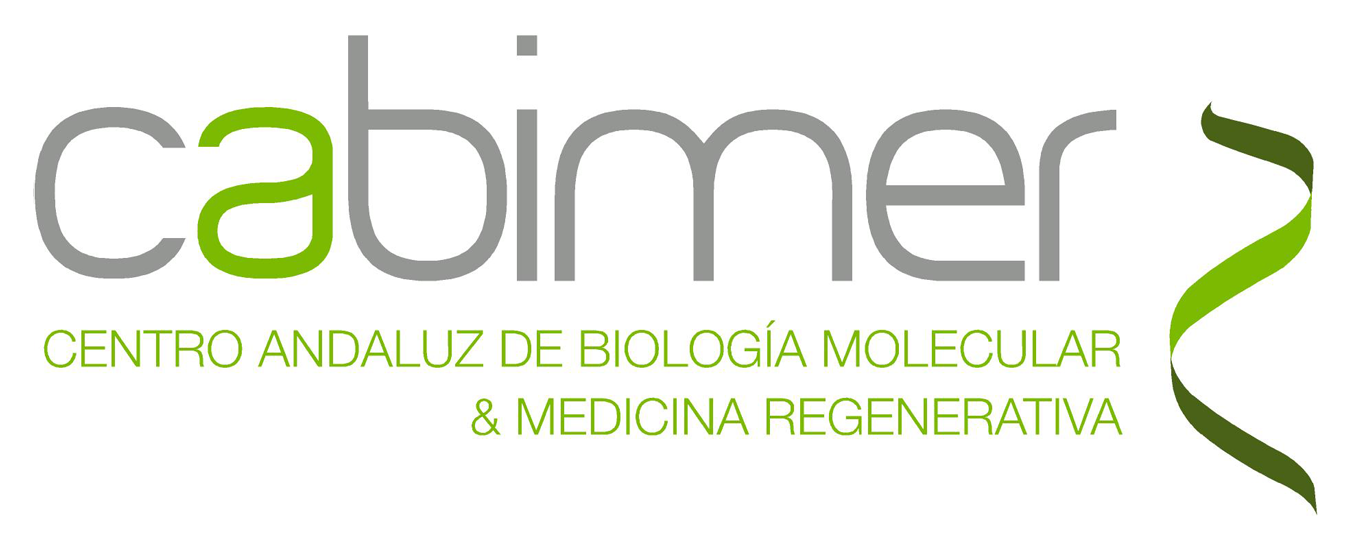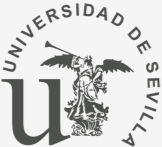Stem Cells and Translational Neurology
Main Research Lines:
1) To explore the therapeutic properties of stem cells in neurological disease models (neuroprotection and regeneration).
2) To elucidate the mechanisms underlying the therapeutic effects of stem cells.
3) To develop new strategies to improve the therapeutic potential of stem cells.

Over the past decades, a large number of studies have emerged in relation to the use of stem cell-based therapies for the treatment of different pathologies, including neurological disorders, cardiac ischemia, cancer and bone and cartilage diseases. Currently, mesenchymal stem/stromal cells (MSCs) constitute the most frequently used cell type in advanced therapies. These cells possess dynamic properties that make them a valuable therapeutic tool. Importantly, MSCs exhibit inherent ability to migrate towards damaged tissues. After engraftment, they secrete bioactive mediators, such as growth factors, cytokines and extracellular vesicles that exert immunosuppressive, anti-apoptotic, anti-fibrotic, and anti-inflammatory effects, among others. These properties have prompted the use of MSCs in preclinical and clinical studies. For this reason, it is essential to continue advancing in the knowledge of MSCs and the processes that control their properties in order to deal with the development of strategies focused on improving the health of the population.
Our group brings over 15 years of experience in stem cell research. Currently, our scientific program aims to investigate the dynamic properties of stem cells, including MSCs, to improve their therapeutic potential. In addition, we explore the use of stem cells for the treatment of central nervous system diseases. Particularly, we are interested in developing cell-based therapies to improve oncological treatments in brain tumor pediatric patients (+VIDA project, supported by the Asociación Pablo Ugarte). Our group collaborates with the Pediatric Oncology Unit of the Hospital Universitario Virgen del Rocío of Seville, led by Dr. Catalina Márquez-Vega, to better translate our research findings into direct improvements to patients’ care.

The number of people that survive cancer is increasing due to advances in early detection and treatments for cancer. For this reason, more attention is being paid to the impact of cancer treatments on patients’ health and quality of life. Radiotherapy is one of the most common treatments for cancer. Around 50% of all tumor patients receive radiation at a given time. Unfortunately, radiotherapy comes with short and long term side effects. In particular, radiation for brain tumors produces neurofunctional sequelae, which may be progressive and permanent. The most frequently described neurological alterations of cranial radiation include learning and memory difficulties, problems in executive functions, reduced processing speed, attention deficits, visual alterations and intellectual decline among others. These neurological sequelae primarily affect pediatric patients because their developing brains are more radiosensitive. Therefore, there is an urgent need to develop new strategies to prevent radiation side effects and promote a healthy cancer-free life.
Our research group faces this challenge from two complementary perspectives: reducing neurotoxicity of radiotherapy in non-tumor cells and increasing radiosensitivity of brain tumor cells. Currently, we have demonstrated that MSCs exhibit neuroprotective effects in a preclinical mouse model of cranial radiotherapy. Importantly, this cell-based strategy reduced radiation-related damages, including cognitive deficits in a safe and effective manner. Importantly, we are exploring the mechanism underliying the therapeutic effects of MSCs. Now, we want to further investigate this line of research by developing more personalized therapies, which would represent an interesting option for clinical application in cancer and other diseases.
If you are interested in applying to a doctoral or postdoctoral fellowship programme with us, send a motivation letter, CV and contact details to vivian.capilla@cabimer.es
- Consejeria de Transformación Económica, Industria, Conocimiento y Universadades – Junta de Andalucía (PY20_00481). Evaluación de la seguridad y eficacia de una terapia celular no invasiva en la
Esclerosis Lateral Amiotrófica. 2022- 2023. IP: Vivian Capilla-Gonzalez. - Instituto de Salud Carlos III. Proyectos de Investigación en Salud (PI20/00341). Personalized cell therapies to improve quality of life in pediatric cancer. 2021-2023. IP: Vivian Capilla-González
- Asociación Pablo Ugarte (Proyecto +VIDA). Desarrollo de estrategias para mejorar la calidad de vida en el cáncer infantil (https://www.asociacionpablougarte.es/proyecto-VIDA/). Desde 2020. IP: Vivian Capilla-González
- Asociación Española Contra el Cáncer (IDEAS20051CAPI). Non-invasive Cell Therapy to Prevent Sequelae of Radiation in Pediatric Brain Cancer. 2020-2022. IP: Vivian Capilla-González
- Instituto de Salud Carlos III. Ayuda vinculada al Contrato Miguel Servet (CP19/00046). Development of cell-based strategies to prevent sequelae of cancer treatment. 2020-2024. IP: Vivian Capilla-González
- Precipita-FECYT-MCIU (2018-000237). Prevención de las Complicaciones Neurológicas del Tratamiento del Cáncer Infantil. 2019-2020. IP: Vivian Capilla-González
- Consejería de Salud de la Junta de Andalucía (PI-0272-2017). Prevención de Los Daños Por Radioterapia Mediante Aplicación de Terapia Celular: Una Estrategia Anti-Inflamatoria. 2018-2020. IP: Vivian Capilla-González
- Fundación Pública Andaluza Progreso y Salud – Junta de Andalucía (PI-0109-2014). Implicaciones de la radiación en la capacidad regenerativa endógena del cerebro. 2016-2017. IP: Vivian Capilla-González

- Baliña-Sánchez C, Aguilera Y, Adán N, Sierra-Párraga JM, Olmedo-Moreno L, Panadero-Morón C, Cabello-Laureano R, Márquez-Vega C, Martín-Montalvo A, Capilla-González V. Generation of mesenchymal stromal cells from urine-derived iPSCs of pediatric brain tumor patients. Front Immunol. 2023
- Capilla-González V, Herranz-Pérez V, Sarabia-Estrada R, Kadri N, Moll G. Editorial: Mesenchymal Stromal Cell Therapy for Regenerative Medicine. Front Cell Neurosci. 2022
- Olmedo-Moreno L, Aguilera Y, Baliña-Sánchez C, Martín-Montalvo A, Capilla-González V. Heterogeneity of In Vitro Expanded Mesenchymal Stromal Cells and Strategies to Improve Their Therapeutic Actions. Pharmaceutics. 2022
- Aguilera Y, Mellado-Damas N, Olmedo-Moreno L, López V, Panadero-Morón C, Benito M, Guerrero-Cázares H, Márquez-Vega C, Martín-Montalvo A, Capilla-González V. Preclinical Safety Evaluation of Intranasally Delivered Human Mesenchymal Stem Cells in Juvenile Mice. Cancers. 2021
- Gauthier BR, Sola-García A, Cáliz-Molina MÁ, Lorenzo PI, Cobo-Vuilleumier N, Capilla-González V, Martin-Montalvo A. Thyroid hormones in diabetes, cancer, and aging. Aging Cell. 2020
- Abdelkrim Hmadcha, Alejandro Martin-Montalvo, Benoit R. Gauthier, Bernat Soria, Vivian Capilla-Gonzalez. Therapeutic Potential of Mesenchymal Stem Cells for Cancer Therapy. Front. Bioeng. Biotechnol. 2020
- Bernat Soria, Alejandro Martin-Montalvo, Yolanda Aguilera, Nuria Mellado-Damas, Javier Lopez-Beas, Isabel Herrera-Herrera, Maria Escarlata Lopez, Juan A. Barcia, Manuel Alvarez Dolado, Abdelkrim Hmadcha and Vivian Capilla-González. Human Mesenchymal Stem Cells Prevent Neurological Complications of Radiotherapy. Front Cell Neurosci 2019
- Livia López-Noriega L, Vivian Capilla-González, Nadia Cobo-Vuilleumier, Martin-Vazquez E, Lorenzo PI, Martinez-Force E, Soriano-Navarro M, García-Fernández M, Romero-Zerbo SY, Bermúdez-Silva FJ, Díaz-Contreras I, Sánchez-Cuesta A, Santos-Ocaña C, Hmadcha A, Soria B, Martín F, Gauthier BR, Martin-Montalvo A. Inadequate control of thyroid hormones sensitizes to hepatocarcinogenesis and unhealthy aging. Aging 2019
- Natalia Escacena-Acosta, Javier Lopez-Beas, Christian Claude Lachaud, Mehrdad Vakilian, Juan Rigoberto Tejedo, Vivian Capilla-González, Francisco Javier Bedoya, Franz Martin, Abdelkrim Hmadcha, Bernat Soria. Stem Cells: Concept, Properties, and Characterization. Corneal Regeneration: Therapy and Surgery. Springer 2019.
- Bárbara Soria-Juan* Natalia Escacena* Vivian Capilla-González*, Yolanda Aguilera; Lucia Llanos, Juan Tejedo, Francisco Bedoya, Verónica Juan, Antonio de la Cuesta, Rafael Ruiz-Salmeron, Enrique Andreu, Lukas Grochowicz, Felipe Prosper, Fermin Sanchez-Guijo, Francisco Lozano, Manuel Miralles, Lourdes del Rio-Sola, Gregorio Castellanos, Jose Maria Moraleda, Robert Sakstein, Mariano Garcia-Arranz, Damian Garcia-Olmo, Franz Martin, Abdelkrim Hmadcha, Bernat Soria. Cost-Effective, Safe and Personalized Cell Therapy of Critical Limb Ischemia in Type 2 Diabetes Mellitus. Frontiers in Immunology 2019
- Vivian Capilla-González; Javier López-Beas; Natalia Escacena; Yolanda Aguilera; Antonio de la Cuesta; Vivian Capilla-Gonzalez; Franz Martín; Abdelkrim Hmadcha; Bernat Soria. PDGF restores the defective phenotype of adipose-derived mesenchymal stromal cells from diabetic patients. Molecular Therapy 2018
- Javier López-Beas*; Vivian Capilla-González*; Yolanda Aguilera; Nuria Mellado; Christian C. Lachaud; Franz Martín; Vivian Capilla-Gonzalez; Bernat Soria; Abdelkrim Hmadcha. miR-7 modulates human embryonic stem cell differentiation into insulin-producing beta-like cells and contributes to cell maturation. Molecular Therapy – Nucleic Acids 2018.
- Mendivil-Perez, M; Soto-Mercado, V; Fernandez-Gil, B; Guerra Librero, A; Florido, J; Shen, YQ; Vivian Capilla-Gonzalez; Tejada, M; Garcia-Verdugo, JM; Acuña-Castroviejo, D; Carlos-López, C; Velez-Pardo, C; Jimenez-Del-Rio, M; Rusanova, I; Escames, G. Melatonin enhances neural stem cell differentiation and engraftment by increasing mitochondrial function. Journal of Pineal Research. 2017
- Hugo Guerrero-Cázares; Emily Lavey; Linda Chen; Paula Schiapparelli; Montserrat Lara-Velazquez; Vivian Capilla-Gonzalez; Gabrielle Drummond; Anna Clements; Liron Noiman; Katrina Thaler; Anne Burke; Alfredo Quiñones-Hinojosa. Robo1 regulates the migration of human subventricular zone neural progenitor cells during development. Stem Cells 2017
- Angela Fontan Lozano; Vivian Capilla Gonzalez; Yolanda Aguilera; Nuria Mellado; Angel Carrion; Bernat Soria; Abdelkrim Hmadcha. Impact of transient downregulation of DREAM in human embryonic stem cell pluripotency. Stem Cell Research 2016
- Vivian Capilla Gonzalez; Janice M Bonsu; Kristin J Redmond; Jose Manuel Garcia Verdugo; Alfredo Quiñones Hinojosa 2016. Implications of Irradiating the Subventricular Zone Stem Cell Niche. Stem Cell Research 2016
- Kalyan Kondapalli; Jose Llongueras; Vivian Capilla-Gonzalez; Hari Prasad; Anniesha Hack; Christopher Smith; Hugo Guerrero-Cázares; Alfredo Quiñones-Hinojosa; Rajini Rao. A leak pathway for luminal protons in endosomes drives oncogenic signaling in glioblastoma. Nature Communications 2015
- Natalia Escacena; Elena Quesada Hernández; Vivian Capilla Gonzalez; Bernat Soria; Abdelkrim Hmadcha. Bottlenecks in the efficient use of advanced therapy medicinal product based on mesenchymal stromal cells. Stem cells international 2015
- Vivian Capilla Gonzalez; Emily Lavell; Alfredo Quiñones Hinojosa; Hugo Guerrero Cazares. Regulation of Subventricular Zone-Derived Cells Migration in the Adult Brain. Adv Exp Med Biol. 2015
- Xavier d’Anglemont de Tassigny; M Salomé Sirerol Piquer; Ulises Gómez Pinedo; Ricardo Pardal; Sonia Bonilla; Vivian Capilla González; Javier de la Torre; José Manuel García Verdugo; José López Barneo. Resistance of subventricular neural stem cells to chronic hypoxemia with structural disorganization of the germinal center and impairment of neuronal and oligodendrocyte survival. Hypoxia 2015
- Vivian Capilla-Gonzalez; Vicente Herranz-Perez; Jose Manuel Garcia-Verdugo. The aged brain: genesis and fate of residual progenitor cells in the subventricular zone. Frontiers in cellular neuroscience 2015
- Vivian Capilla Gonzalez; Arantxa Cebrian Silla; Hugo Guerrero Cazares; Jose Manuel Garcia Verdugo; Alfredo Quiñones Hinojosa. Age-related changes in astrocytic and ependymal cells of the subventricular zone. Glia 2014
- Vivian Capilla Gonzalez; Hugo Guerrero Cazares; Janice M Bonsu; Oscar Gonzalez Perez; Pragathi Achanta; John Wong; Jose Manuel Garcia Verdugo; Alfredo Quiñones Hinojosa. The subventricular zone is able to respond to a demyelinating lesion after localized radiation. Stem Cells 2014
- Vivian Capilla Gonzalez; Arantxa Cebrian Silla; Hugo Guerrero Cazares; Jose M Garcia Verdugo; Alfredo Quiñones Hinojosa. The generation of oligodendroglial cells is preserved in the rostral migratory stream during aging. Frontiers in cellular neuroscience 2013
- Rodrigo Ramos Zúñiga; Oscar González Pérez; Ana Macías Ornelas; Vivian Capilla González; Alfredo Quiñones Hinojosa. Ethical implications in the use of embryonic and adult neural stem cells. Stem cells international 2012
- Vivian Capilla Gonzalez; Sara Gil Perotin; Antonio Ferragud; Luis Bonet Ponce; Juan Jose Canales; Jose Manuel Garcia Verdugo. Exposure to N-ethyl-N-nitrosourea in adult mice alters structural and functional integrity of neurogenic sites. PloS One 2012.
- Pragathi Achanta; Vivian Capilla Gonzalez; David Purger; Juvenal Reyes; Kurt Sailor; Hongjun Song; Jose Manuel Garcia Verdugo; Oscar Gonzalez Perez; Eric Ford; Alfredo Quinones Hinojosa. Subventricular zone localized irradiation affects the generation of proliferating neural precursor cells and the migration of neuroblasts. Stem Cells 2012
- Vivian Capilla-Gonzalez; Vicente Hernandez-Rabaza. Cocaine and MDMA Induce Cellular and Molecular Changes in Adult Neurogenic Systems: Functional Implications. Pharmaceuticals 2011
- Vivian Capilla Gonzalez; Sara Gil Perotin; Jose Manuel Garcia Verdugo. Postnatal exposure to N-ethyl-N-nitrosurea disrupts the subventricular zone in adult rodents. European journal of neuroscience 2010
- Kaisorn L Chaichana; Hugo Guerrero Cazares; Vivian Capilla Gonzalez; Grettel Zamora Berridi; Pragathi Achanta; Oscar Gonzalez Perez; George I Jallo; Jose Manuel Garcia Verdugo; Alfredo Quiñones Hinojosa. Intra-operatively obtained human tissue: protocols and techniques for the study of neural stem cells. Journal of neuroscience methods 2009
- María Del Carmen Gómez Roldán; Margarita Pérez Martín; Vivian Capilla González; Manuel Cifuentes; Juan Pérez; Jose Manuel García Verdugo; Pedro Fernández Llebrez. Neuroblast proliferation on the surface of the adult rat striatal wall after focal ependymal loss by intracerebroventricular injection of neuraminidase. Journal of comparative neurology 2008
- Kaisorn L Chaichana; Vivian Capilla Gonzalez; Oscar Gonzalez Perez; Gustavo Pradilla; James Han; Alessandro Olivi; Henry Brem; Jose Manuel Garcia Verdugo; Alfredo Quiñones Hinojosa. Preservation of glial cytoarchitecture from ex vivo human tumor and non-tumor cerebral cortical explants: A human model to study neurological diseases. Journal of neuroscience methods 2007
- Maria Duran Moreno; Vivian Capilla Gonzalez; Jose Manuel Garcia Verdugo. Neurogénesis en la zona subventricular Tumores intraventriculares. Permanyer 2010
- Susana Gonzalez Granero; Clara Alfaro Cervello; Vivian Capilla Gonzalez; Melissa Lezameta Morgan; Miriam Romaguera Ros; Jose Manuel Garcia Verdugo. Neurogenic sites in non-mammalian vertebrales Postnatal and adult neurogenesis. Research Signpost. 2008.
- Susana Gonzalez Granero; Vivian Capilla Gonzalez; Melissa Lezameta Morgan; Jose Manuel Garcia Verdugo. Aspectos comparados de la neurogenesis y migración tangencial al Bulbo Olfatorio La olfacción en España. SBI, S.L. 2006.








